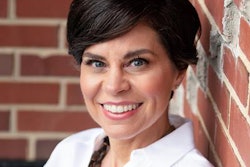
Your practice has a lot riding on your next hire, but how do you know if a candidate is really right for the job? Annette Igl of U.S. Oral Surgery Management has more than 25 years of human resources experience. She knows that to hire the right person you need the right strategy.
Although it may sound like an easy question to answer, many factors have to be taken into account, which can complicate things. The first step, though, is simple enough: Implement an effective hiring strategy.
1st step
 Annette Igl.
Annette Igl.Finding qualified candidates can be the most difficult part of a recruiting process. Without great candidates, you may settle for someone less qualified simply to fill an open role. Knowing where to post is key, but figuring that out can be time-consuming. Each individual industry, region, subspecialty has a sweet spot or two -- places where job postings attract better applicants. These sweet spots can vary for different jobs, even within the same company.
If you don't have the time to devote to this kind of in-house research, consider hiring a specialist who can help hone your target platforms, yielding better, more qualified applicants.
2nd step
The next step is to create the right copy for the job post. The most important part of this process is to weave in your culture, mission, and values. This will help you immediately focus on the best candidates. Previously, expertise trumped culture in this copy, but there has been a dramatic shift because of the evolving job market. Today, more jobs are available than candidates, particularly in oral health, making the cultural fit more imperative to the applicant and the company.
In such a highly competitive job market, job posts should describe the position and include differentiators -- information that communicates how your practice, in general, and this position, in particular, are different from the competition. This helps ensure the candidates who apply are a better fit and highly motivated to both get the job and keep it. Think of it like an ad: Put your best foot forward, reach the target audience, and influence that audience to take action. In this case, the action is getting the right candidate to apply.
One tactic that works well is to include bullet-point descriptions of the perks offered:
- Healthcare, vision, and dental insurance
- Retirement funds and planning
- Paid holidays and sick days
- Flex plans
- Parking
- Continuing education opportunities
- Schedule flexibility
- Advancement opportunities
Resume screening
Next, screen through the resumes, so only the best candidates remain. After screening through candidates, interviews begin. Ask the same questions of everyone so that candidates are being compared apples to apples. We encourage open-ended questions that are designed to reveal more about each candidate's personality, expertise, and likes and dislikes. In addition, these questions can give candidates a better understanding of the work environment, day-to-day experiences, and more. A great question for a candidate might be: "Describe what good teamwork looks and feels like."
“When speaking with a reference, ask open-ended questions.”
Another example to consider: I'm very collaborative. I like to brainstorm with everyone at the drop of a hat. When conducting interviews, I share that. When I shared this with one interviewee, she responded by saying: "Collaborating is great when you have time, but I find it is more efficient to just make the decision and move on." She was a highly qualified candidate who had a great background, but I knew she wouldn't be a good fit for my team.
After finding a good fit, begin the process of background and references checks. When speaking with a reference, ask open-ended questions, such as "What are their strengths?"
This will help glean more useful information than yes-or-no questions. I recommend using a 360° approach with references. Speak with someone the candidate supervised (if a leadership role), someone who supervised the candidate, and at least one coworker. Three references should suffice for anyone below director level. Seek additional references for higher levels.
It's important to note that large companies may have a policy against answering reference questions other than verifying that the person was an employee. If this is the case, the reference should know this and respond accordingly. However, some people may still open up and provide useful information, so it doesn't hurt to ask. In addition, this kind of policy doesn't usually apply at the coworker level, and smaller companies are less likely to have a policy like this in place, so it is worth pursuing.
Deciding factors
Once the background and reference checks are complete, I recommend practices bring the top candidates into the workplace for a one- to two-hour observation period. This helps candidates to get a better feel for the job and its many facets, like coworkers, job assignment, workflow, and even the commute. Our practice partners have found this particularly helpful when hiring surgical techs because it allows doctors to see firsthand if the job candidate is squeamish and gives everyone involved the opportunity to ask direct questions.
If the job candidate has a successful observation period, then make an offer. This part of the hiring process is often overlooked, but it can play an important role in retention both for future and current employees. A lot of practices base job offers solely on budget. While budget should be a consideration, it should not be the deciding factor.
Before making an offer, take time to understand the base pay for each position, as well as cost of living, competitive rates, and so on. Then determine if the compensation is within the market average. If not, make sure there is a good justification for the difference. Otherwise, morale can suffer and you can lose valuable employees.
Before hiring, take the time to prepare. Think through the skill set and experience needed to round out your team. Follow the steps above to thoroughly understand if candidates fit the culture. Present your company to job candidates with honesty and integrity. This will help ensure you find and secure the right people for the right jobs.
Annette Igl is vice president of human resources for U.S. Oral Surgery Management. She has more than 25 years of experience as a senior-level human resources executive.
The comments and observations expressed herein do not necessarily reflect the opinions of DrBicuspid.com, nor should they be construed as an endorsement or admonishment of any particular idea, vendor, or organization.


















